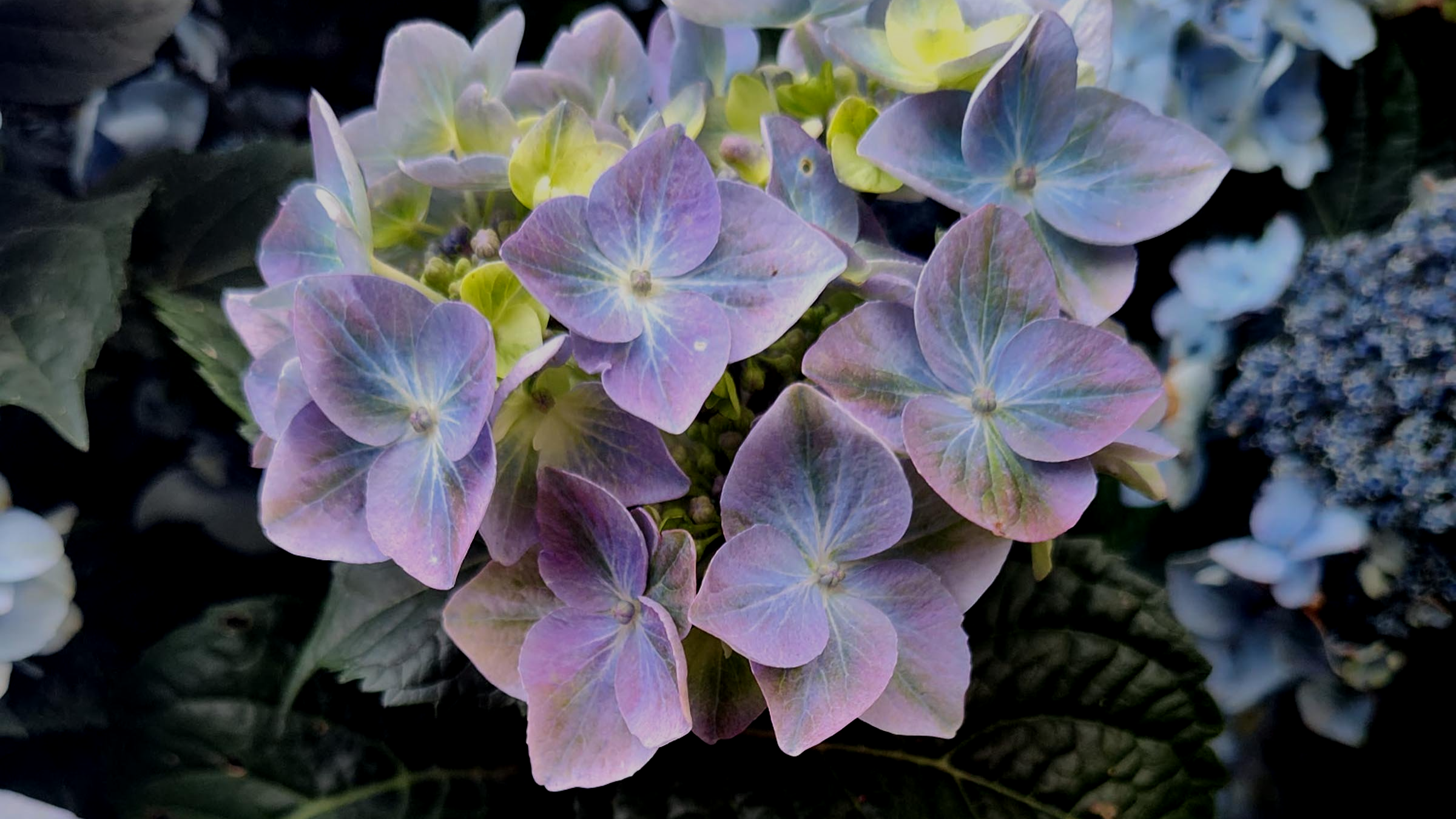I recently came across an article in my wife’s The English Garden magazine (September 2023 edition) in which the author was regaling the many attributes of one of my favorite perennials, Persicaria amplexicaulis, or Fleece Flower as it is known more commonly. Turns out that the Brits like them just as much as this Yank. The truth is that I have enjoyed several different species of fleece flowers for many years. Some I have grown for their colorful foliage like ‘Painter’s Palette’ and ‘Brush Strokes’, others for their ground hugging qualities like ‘Dimity’, and still others for their outsized presence in the garden, like Persicaria polymorpha ‘Giant Fleece Flower’. The varieties grown for their floral production mostly hail from China and the Himalayas, whereas the ones that produce the most interesting foliage are derived from a variety native to the southeast United States (Persicaria virginiana).
Fleece flowers are also know as Knotweeds, which might put the fear of God into any self-respecting gardener. The good news is that most of them are easily managed and while vigorous, are not invasive. The one exception, unfortunately, is Japanese Knotweed which was introduced into the United States a couple hundred years ago and is now in almost all 48 states and several regions of Canada. Sometimes referred to as Japanese Bamboo, it is actually somewhat attractive and gives a tropical feeling to a garden, but oh my gosh, it is a thug that is difficult to control and will choke out everything in its path. Needless to say, it is on the noxious weed list in almost every state in the nation and cannot be sold, so there is no need to worry about accidentally purchasing it, unless it sneaks into one of those plant sales by the many well-intended gardening groups, who don’t always realize what they are selling.
Getting back to the varieties I love, I currently have five different ones in my new garden - three of which I propagated and brought from my old garden and two that I recently purchased from my favorite garden center. ‘Painter’s Palette” boasts leaves that are “marbled and splashed with creamy white, yellow and a touch of pink, with each leaf having a large central chocolate-red chevron” (according to the Missouri Botanical Garden). It prefers some afternoon shade to look its best and will throw out a few seedlings every year, but it is not problematic. ‘Brushstrokes’ is another one I grow for its foliage, which is velvety-green with a dark chevron in the middle. Sadly, both of the above varieties have become hard to find in the industry.
As for flowers, Persicaria a. ‘Firetail’ was the standard bearer for years, but has now been surpassed by varieties like ‘Tarus’ (flowers are blood red), ‘Orange Field’ (flowers are glowing coral - this is the one that I currently have), ‘Fat Domino’ (recent Award of Garden Merit winner from Wisley in England), and several others that will eventually find their way into garden centers. Be patient.
Probably my current favorite is one called ‘Golden Arrow’, which has dark red flowers that persist for 4 months (that pollinators flock to) atop of golden yellow foliage (chartreuse if in afternoon shade). I have yet to meet a yellow-leafed plant that I didn’t like.
Finally, for a fabulous, easy-to-grow ground cover, you can’t beat ‘Dimity’ with its glossy, green leaves that hug the ground and form a dense mat that is punctuated with 12-inch-tall spikes of pink flowers, who eventually fade to a rusty red and persist all winter. The foliage also takes on a reddish tone in the winter as well. All it requires is consistent moisture to be happy.
So, there you have it, a brief introduction to “Fleece Flowers” - easy to grow, long blooming, carefree perennials that will add interest to any perennial bed. Let the hunt begin!


